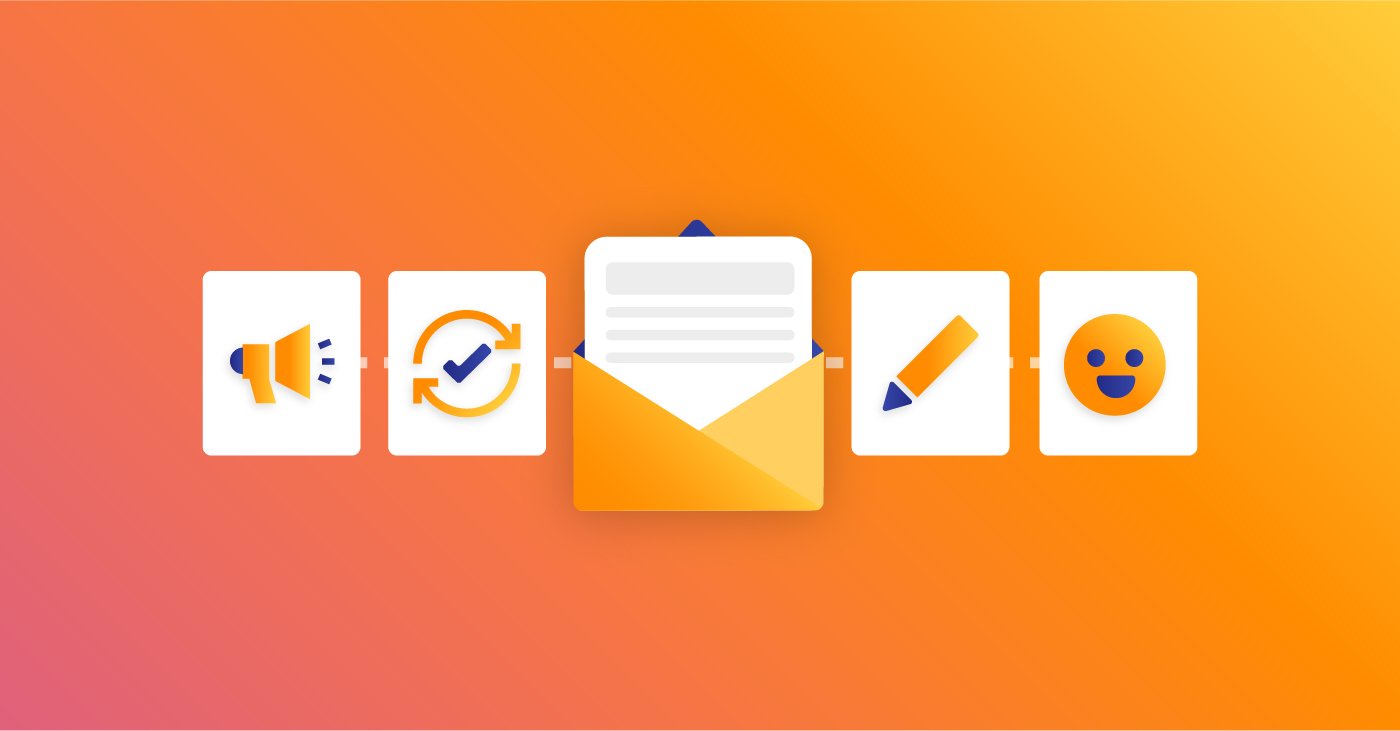
Ross Simmonds, CEO of Foundation Inc, advises marketers to create content once and distribute it forever. The reason is simple: the more eyeballs your content gets, the more leads it generates. While there are many ways to get your content in front of your audience, email marketing is often underutilized.
This guide will show you how you can embrace email marketing as a content distribution channel. We’ll show you examples of drip campaigns you can use to give your content more eyeballs, as well as discuss how to leverage newsletters to promote blog posts and improve traffic to your website.
Using Drip Campaigns to Promote Blog Posts
An email drip campaign is a series of pre-written marketing emails you send out sequentially to convert a prospect. Since drip campaigns serve different purposes, such as nurturing leads and re-engaging disengaged prospects, you can use them to promote your blog posts.
Here are some drip email campaigns and how to use them for content distribution:
1. Lead Nurturing Series
A lead nurturing series typically includes an introduction email to thank the prospect and welcome them to your email distribution list. You won’t add links to blog posts in this email, but the prospects joined your list to learn more about your product before buying. For that reason, you should send educational emails after the welcome email and add links to blog posts that answer common questions about your product. As the series progresses, it’s prudent to send emails with links to blog posts that explain how your product differentiates you from your competitors. Some of the blog post types to share in a lead nurturing email series include:
- Key features of your product, including any new releases
- Case studies that showcase happy customers
- Comparison posts, such as your product vs. your top competitor
2. Retargeting Campaign
A retargeting drip series works best for prospects who have engaged with your content meaningfully in the past but are yet to convert. You’ll have information about the content the prospects engaged with, such as the specific product page they visited or the resource (whitepaper or eBook) they downloaded.
If a prospect has visited your pricing page multiple times, you could send them a pricing comparison blog post. Follow this up with a testimonial about a customer who was worried about the pricing and ended up choosing your product for its value for money. Studies have shown that testimonials sway the buying decision of 95% of consumers.
3. Post-Demo Campaign
This is for you if you sell a product that can be demonstrated live, such as SaaS and other tech solutions. When you provide a product demo, you can’t go silent and cling to the mere possibility that the prospect will choose your product.
Instead, add the prospect to your post-demo campaign and send an email that re-emphasizes your product’s value. Share blog posts about your product’s unique selling proposition (USP) to keep it top of the prospect’s mind and improve the chances of converting these prospects.
Using Your Email Newsletter to Promote Blog Posts
Recent studies show that 81% of brands use email newsletters. If you’re not already using email newsletters, you risk losing leads to your competitors. An email newsletter can offer a great channel to distribute your content: you can share blog posts that highlight a new product, announce new features or a pricing model, reveal the latest product update, and more.
However, with the prevalence of newsletters, you can’t create one for the sake of it. It takes meticulous planning to get the most out of email newsletters. Here’s how you use email newsletters to promote blog posts:
1. Build a Subscriber List
Growing your email list is arguably the most challenging part of running your email newsletter, but you can’t do without a list. Your email newsletter will achieve the intended results if you have a substantial list. If you’re getting started, be sure to check out our guide on how to grow your email list.
2. Segment Your List
Personalization is the name of the game in today’s digital arena. To build a loyal following around your newsletter, you must deliver curated content experiences. Segmentation drives proper personalization. Segment your list based on subscribers’ interests or other identifying factors, such as the blog posts they click on when they visit your website, the resources they download, the products they buy, the region they live in, or the industry they’re in.
3. Curate Your Content
Since you’ve already published blog posts on your website, you only need to curate content based on the subscribers’ interests. The idea here is to increase traffic to your website — an image-rich newsletter can help you in that course.
Instead of adding links to your email, include summaries that capture the main point of each blog post. Add captivating visuals to grab the reader’s attention, and end each summary with a teaser and an action-provoking call to action, such as “Get More Emailing Tips.”
4. Choose the Right Time to Send Newsletters
The frequency and time of sending emails are critical to the success of your newsletter. You don’t want to cram subscribers’ inboxes with email newsletters — the subscribers are busy. If you oversaturate subscribers with email newsletters, the unsubscribe rate will increase rapidly.
When it comes to sending time, the latest Litmus report found that sending emails between 10:00 a.m. and 11:00 a.m. achieves the highest open rate. However, the time that is best for your audience could differ. For that reason, monitor your newsletter performance to determine the best times to send out your emails.
Try these email tips and track your website traffic to determine if you’re successfully getting more traction to your company’s blog. Be consistent, and make sure you select the right blog content for the right subscribers.






